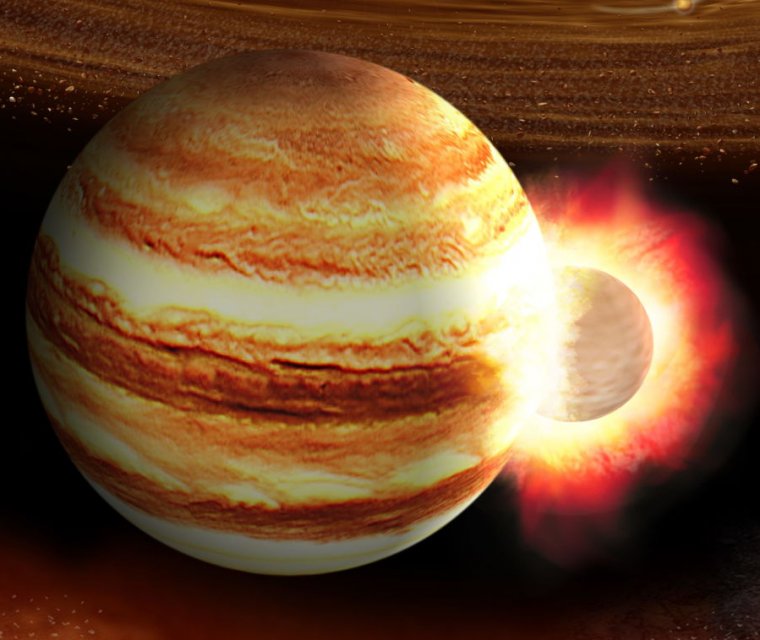Jupiter may have had a head-on collision with a massive protoplanet
Ars Technica » Scientific Method 2019-08-14

Enlarge (credit: K. Suda & Y. Akimoto/Mabuchi Design Office)
Planet-forming disks start out as a mix of dust and gas, but the gas doesn't stick around for long. As the star at their center ignites, the radiation it emits starts driving off the gas, eventually leaving a disk with nothing but dust behind. That creates a narrow window for the formation of gas giants, which have to grow big enough to start sweeping in gas before the star drives it all off.
Our current models suggest that the best way to do this is to start with a large solid body, roughly 10 times the mass of Earth. That's big enough to draw in gas quickly and start a runaway process by which the ever-increasing mass pulls in more material from farther away in the disk. This would suggest that, buried deep below the clouds and layers of metallic hydrogen on Jupiter, there's a solid core that would dwarf the Earth if it were ever stripped of all the material above it.
Among other things, the Juno mission was intended to test this idea by studying the gravitational field of the giant planet. But the data it has been sending back suggests something strange is going on inside Jupiter, with more heavy material outside the immediate core area than we'd expect. Now, an international team of researchers is providing a possible explanation: Jupiter's core was shattered by a head-on collision with a massive protoplanet.